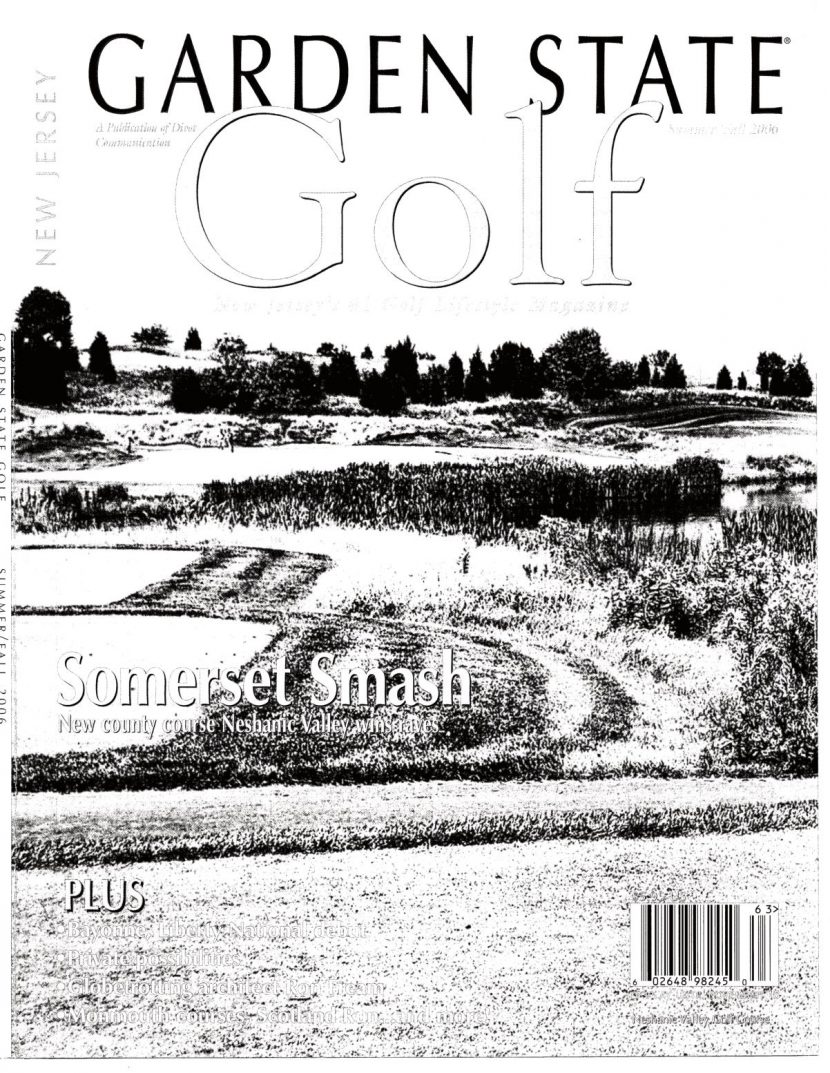Divot, Garden State Golf, Summer/Fall 2006
Hidden Creek is true to the essence of classic golf architecture.
An often heard quote from world-renowned architects Ben Crenshaw and Bill Coore about their design of the golf course at Hidden Creek Golf Club aptly describes the property: “The course is laid gently upon the land.”
I played nine holes on my first visit to Hidden Creek before it officially opened in 2002. The bentgrass was grown in on the fairways, but the fescue and the grasses presently adorning the fringe of the bunkers was not. I thought, perhaps, the course had been laid a bit too gently on the land. But the vision and expertise of Crenshaw, Coore, and owner Roger Hansen proved to be on the mark.
Hansen had successfully developed and operated Blue Heron Pines, pioneering upscale public golf in the region when it debuted in 1993. At Hidden Creek, he set out to create the private club of his dreams. He had known Crenshaw and Coore for some time, and ascribed to the same principles of golf course design, making it a natural that they would work together.
As Crenshaw stated, “Bill Coore and I stand for tradition and old-fashioned values. We admire a lot of the classic golf course architects. We don’t move a lot of dirt. We like to work with the inherent characteristics of the land.”
Hansen wholeheartedly endorsed the direction and goals of the project. As a member of Pine Valley and a student of the game, he had an affinity for the architects’ philosophy and approach.
All that was needed was the right property to come along. The 750 acres upon which Hidden Creek now sits met with everyone’s approval. The sandy soil, tall pines, and mixed hardwoods indigenous to South Jersey pinelands made the land ideal for building a golf course.
“We tried to work with the land and create balance and variety in the design. The land had just enough movement and diversity to create these things,” says Crenshaw. Somewhat unique to normally flat South Jersey are the slight elevation changes that gave the designers an added element to work with. The greens are most ample, the fairways relatively wide with waste bunkers running along the edges of some fairways. Although many trees were cut to make way for the routing, only 50 tons of dirt was moved in the construction of Hidden Creek.
What’s been created is a very playable course that accommodates golfers of all skill levels. It is a comfortable walking course, as well.
“I think people will say that the course looks like it’s been there for a long time,” says Crenshaw. “We want it to look natural and rustic.”
The clubhouse and lodge are consistent with an adherence to tradition and are very tastefully appointed. Earthtone colors, natural wood, and stone accent the theme of understated elegance achieved by Texas-based architect, S. Vic Jones. Spacious customized interior design is evident throughout, from the pro shop, lounge, exercise room, dining room, grill room, and locker rooms. The interior plan and decoration, the work of local designer John Kelly, along with Edwina Hansen, was intended to “create a comfortable and relaxing atmosphere.” And it does.
Roger Hansen wanted the men’s locker room to have a masculine feel. It surrounds you with rich tones that blend well with wooden lockers, vaulted ceiling, paneled walls, crown mouldings, and a large fireplace. To the left of the fireplace is mounted an Elk head from New Mexico. To the right is a European Red Stag head from the Scottish Highlands. The comfortable leather couches in the card room are well placed for viewing events on the large screen.
As much thought was put into the women’s locker room. “Roger would have a very difficult time getting away with short-changing the ladies’ locker room with me as his wife,” says Edwina Hansen. The decor is feminine, but not frilly, with upholstered seating and soft-hued lockers.
The addition of the lodge, opened in June, sets Hidden Creek apart from many other private courses. The lodge enables national members to stay on property overnight in spacious quarters with friends and dine on meals prepared under the direction of executive chef John Manzione. The sauna, steam room, masseuse, and golf-specific fitness trainer, Aaron Bada, enhance the personal attention and experience.
The staff provides another example of the club’s commitment to appreciating and fostering the traditions of the game. Ian Dalzell, a native of Ireland, is the general manager and head golf professional. As Roger Hansen describes him, “Ian possesses a deep insight and understanding of the game of golf in its purest form.” Scottish-born teaching professional Scott Kirkwood and Sally Morton, the membership and marketing director, share this outlook.
It all adds up to a new course with very much the feel of a classic.

Cover photo 
Page 1 
Page 2
